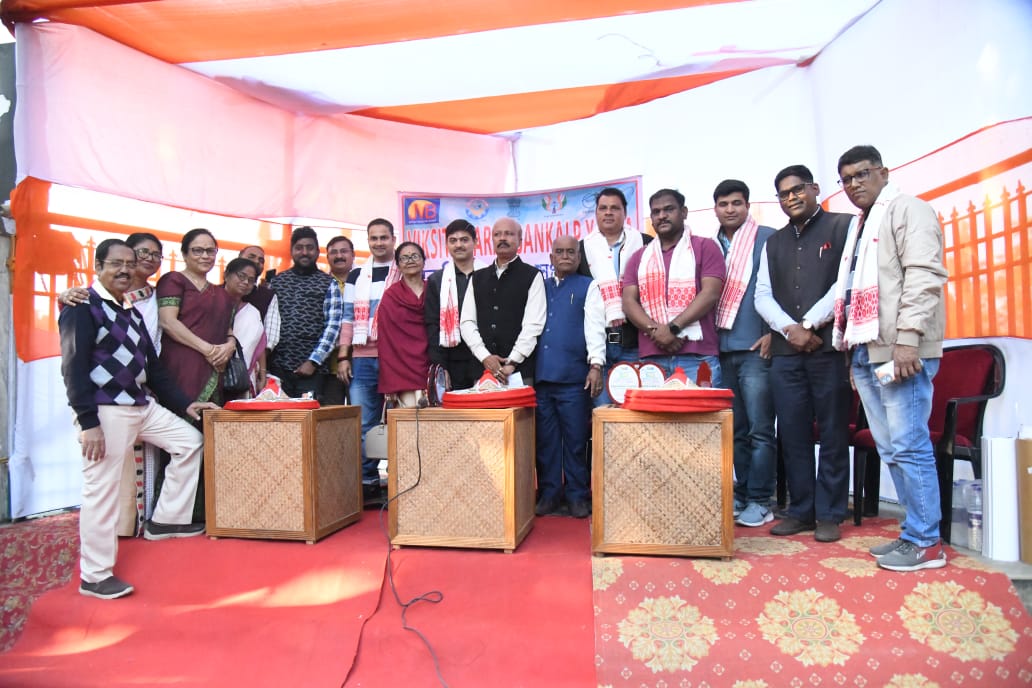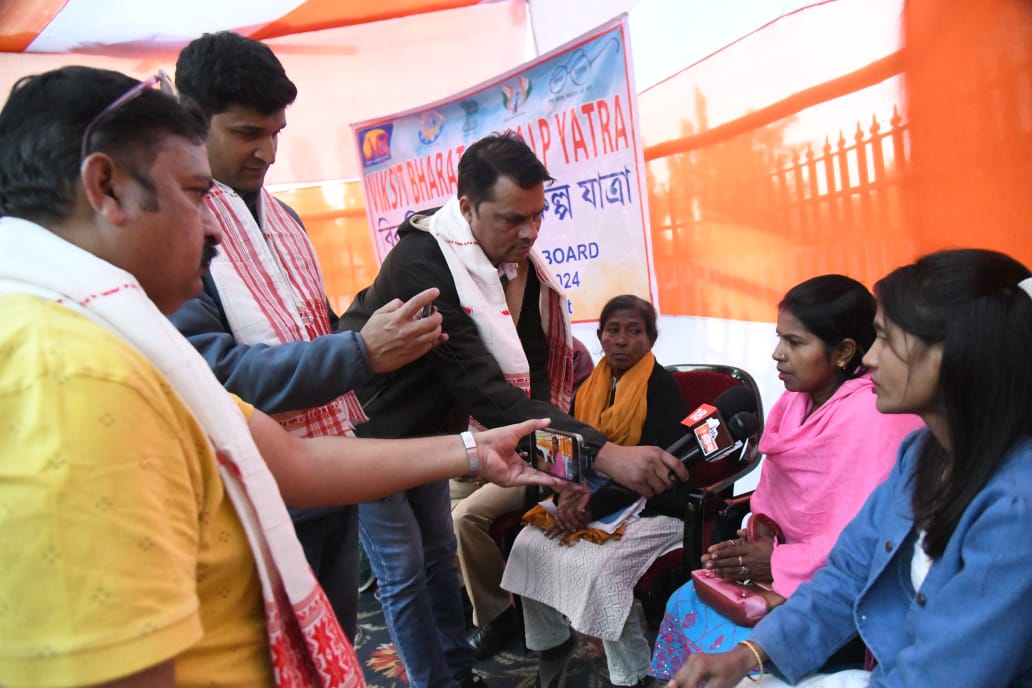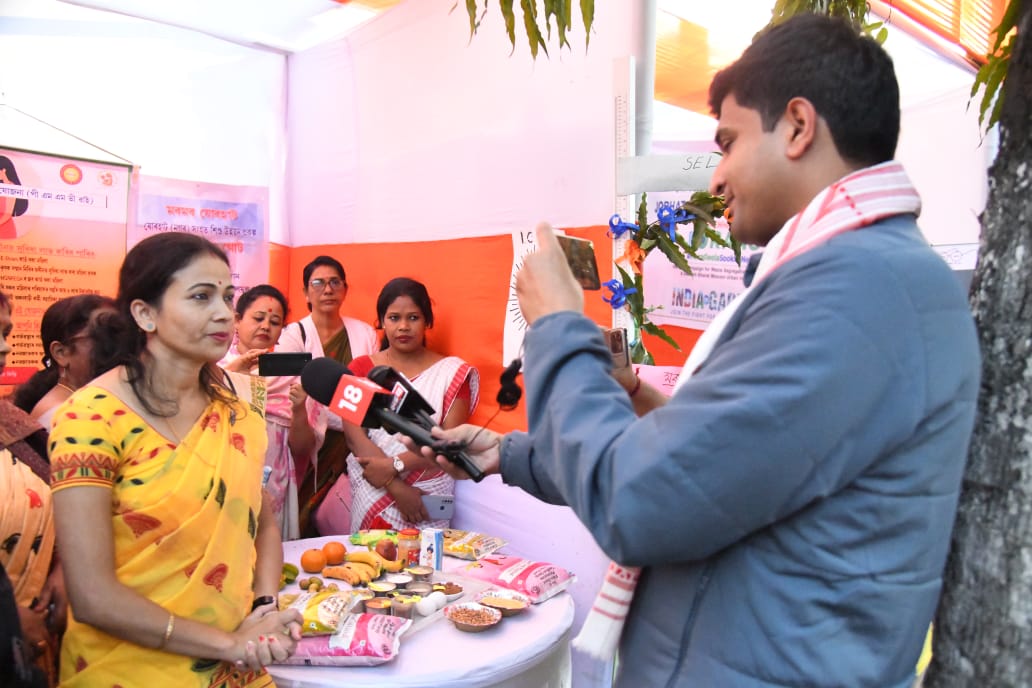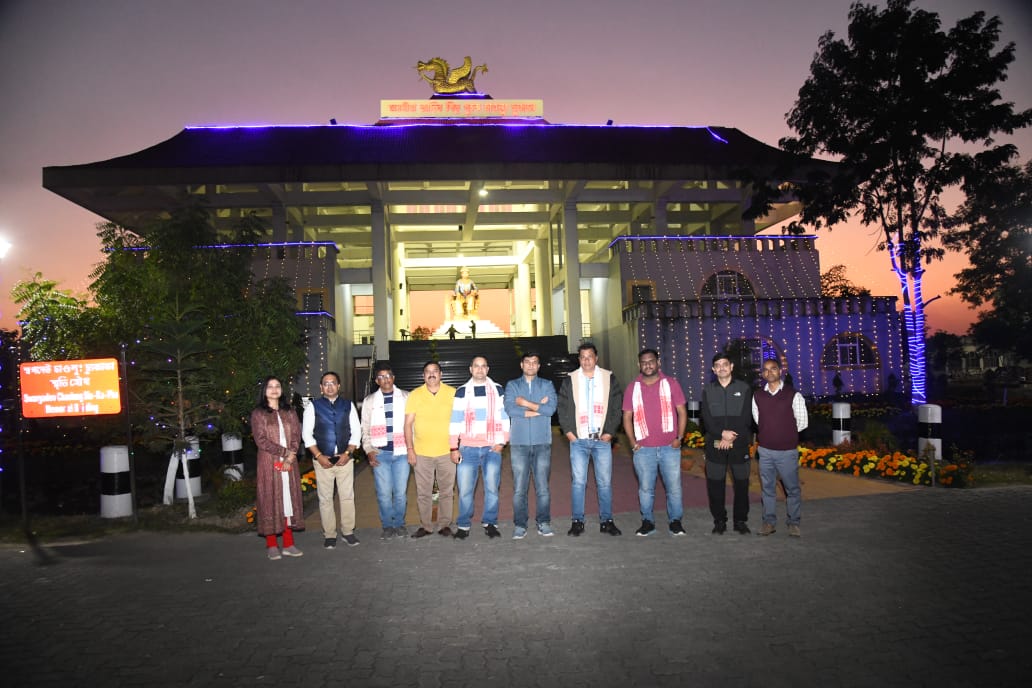Guwahati
As an endeavour of the Press Information Bureau, seven journalists from Rajasthan are on a visit to Assam. The aim of the visit is to showcase rich cultural and natural heritage of Assam along with important initiaves in infrastructure and industrial development in the state.

The team visited the Viksit Bharat Sankalp Yatra (VBSY) Urban camp at ISBT, Tarajan, Jorhat district today. Apart of team of journalists, Shri Dhrubajyoti Nath, SDO and Executive officer, Jorhat, Shri Bikram Newar, Assistant Commissioner, Chairperson and vice chairperson of Jorhat Municipal Board were present.

The team of journalists interacted with beneficiaries of several Central government schemes and learnt the impact of VBSY in Jorhat district.
Shri Tanmay Acharya, District Programme Coordinator, Deptt. of Women & Child Development, Govt. of Assam shared an initiative “Sanchay Laxmi”, where piggy banks are distributed among the girl child to impart the habit of saving and financial literacy. The District Hub for Empowerment of Women (DHEW), Jorhat disbritutes the piggy bank (Gullak) with lock and key facility to the parents of the girl child along with the forms and brochure of Sukanya Samriddhi Yojana (SSY), which is a small saving-based goverment scheme exclusively for girl child and was launched as part of Beti Bachao Beti Padhao campaign.

The journalists also shared some money in the piggy banks. Women beneficiaries also shared their stories and benefits of several govt. schemes.
In the later part of the day the team of journalists visited Swargadeo Chaolung SUI- Ka- Pha Samanway Kshetra in Jorhat. It is a cultural-cum-educational centre in the district. The team visited the museum and learnt about the culture and history of Ahom Kingdom. The centre encompasses the Sui-Ka-Pha memorial, museum, art and craft centre, artisan’s village etc.

It was a fulfilling day for the journalists as they witnessed the socio-economic-cultural development in the state.
……………..

